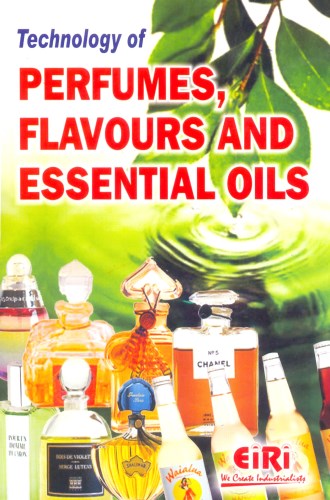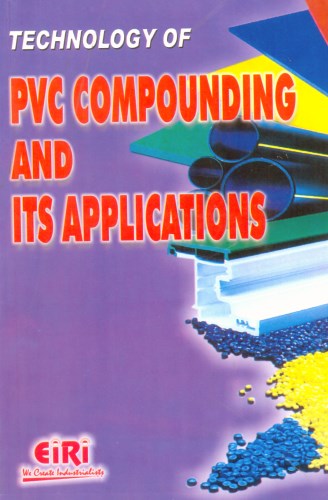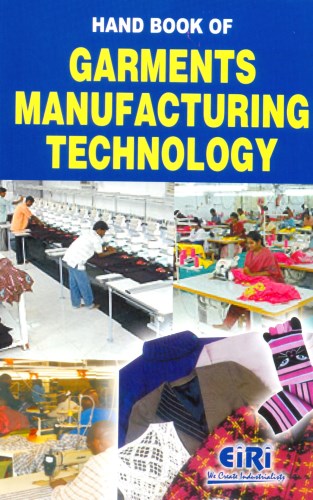Description
MODERN TECHNOLOGY OF BIOPROCESSING
BRIEF DISCUSSION OF BIOPROCESSING
Industrial Bioprocessing
Environmental Bioprocessing
Human Applications
Fermentation Technology Microbial Growth:Need for Artificial Culture
Phases of Microbial Growth
Growth and the Monod Equation
Microbial Metabolites
Primary metabolites
Secondary metabolites
TYPES OF FERMENTATION
Solid State Fermentation
Microorganisms for SSF
Koji and Tempeh
Substrates
Lignocellutose
Pectins
Lignin
Starch
Biomass Measurement in SSF
Respiratory Metabolism
Production of Extracellular Enzymes or Primary Metabolites
Protein content
Glucosamine
Environmental Factors for SSF
Moisture Content and Water Activity (Aw)
Temperature and Heat Transfer
pH Control and Risks of Contamination
Oxygen Uptake
Solid State Bioreactors
Solid State Fermentation Production of Industrial Enzymes
Selection of Microorganisms
Selection of Substrate
Factors Affecting the Substrate
Design Aspects of Fermenter
Factors affecting enzyme production in solidstate fermentation system
Submerged Fermentation
Types of Culture Systems
Batch Processing Culture
Continuous Culture
Methods for Continuous Cultivation
Chemostat
Turbidostat
Auxostats
pH auxostat
Dissolved Oxygen auxostat
Auxostat Math
Analysis of buffering capacity
Auxostat Control based on Specific Gravity
Fed Batch Culture
Advantages
Disadvantages
Fixed volume Fed batch
Variable volume Fed batch
Parameters used to control the submerged fermentation
Calorimetry
Specific Growth Rate
By product Concentration
Inductive, Enhancer or Enrichment Components
Respiratory quotient (RQ)
Parameters to Start and Finish the Feed, and Stop the Submerged (Fed batch) Fermentation
Limiting Nutrient and Growth of Submerged Fermentation
Product Formation
Synchronous Culture
COMPOSITION AND NUTRITION OF FERMENTED PRODUCTS
Introduction
Role of Nutrition
Nutrients in Food
Carbohydrates
Fats
Proteins
Fibres
Water
Minerals
Vitamins
Deficiency Symptoms
Proteins
Vitamins
Minerals
Antinutritional Factors
Inherent toxins
Trypsin inhibitor
Haemagglutinins
Amylase Inhibitor
Lathyrogens
Nutritional Contribution of Fermented Foods
Changes During Fermentation
Mechanism of Improvement
Fermentation Processes & Nutrient Retention
Composition and Nutritive values of Fermented Foods
Alcoholic Beverages
Composition
TECHNIQUES OF FERMENTATION SYSTEMS
Introduction
Fermentation Design
The Role of Environment in Fermentation Design
Principal Types of Fermentation Systems
Subspended growth Systems
Suppored growth Systems (Surface culture films and Fluidized Beds)
Fluidized beds
Coherent Moving bed Systems
Types of Fermentation
Liquid Fermentations
Solid State/Substrate Fermentation
Scale up of Fermentations
Problems in Scale up
Fundamental Differences Between Large & Small Scale Fermentations
Medium Formulation
Sterilization
Methods for Sterilization
Autoclaving
Limitations of Autoclaving
Maillard Reaction
Filtration
Tyndallization
Radiation
Sterilization of Bioreactors
Batch Sterilization
Continuous Sterilization
Bioreactor Technology
Fermenter and Bioreactor Types
Shake Flasks and Bottles
a) Shaker Tables
b) Shake Flask Volume
c) Fermentation Glassware
Stirred Tanks
Automation and Performance
Air lift Fermenters
Tower Fermenters
Bioreactors Utilizing Immobilized Biomass
Fixed bed Reactors
Fluidized Bed Reactor
Rotating Disc Fermenter
Special Cultivation Systems
Immobilized cell Continuous Reactors
Fed batch Culture
Dialysis Culture
Method of Fermentation
Inoculum Preservation
Methods of Preservation
Storate at low temperatures (2-6 Deg.C)
Frozen Storage
Lyophilization
Growth of the Inoculum
Fermenter Preculture
Production Fermentation
Design and Construction Principles of a Stirred Tank Bioreactor
Fermenter Design
construction of an Aerobic Fermenter
Certain Points for Consideration
Batch Versus Continuous Operation
Batch Operation
Continuous Operation
Techniques of Continuous Process
Chemostat
MEDIA FOR INDUSTRIAL FERMENTATION
Chemical Composition
Buffering Capacity of the Medium
Antifoam
Consistency
Raw Materials in Industrial Fermentation
Molasses
Cane molasses
Cellulose
Corn Steep Liquor
Soy Bean Meal
Malt Extract
Sterilization
Batch Sterilization
Advantages in batch sterilization
Disadvantages in Batch Sterilization
Wet Sterilization
Dry Sterilization
Continuous Sterilization
Advantages in Continuous Sterilization
Disadvantages in Continuous Sterilization
Heat Economy in Batch & Continuous Sterilization
Heat Exchangers in Bioprocesses
Heat Transfer Area
Fluid Flow Rate
Temperature Gradient
Types of Heat Exchangers
Shell and Tube Exchangers
Plates in a heat Exchanger
Air Sterilization
PROCESS CONTROL
Introduction
Aeration
Standing Cultures
Surface cultures
Shake Flasks
Mechanically Stirred Tank Bioreactors
Sparged Stirred Tank Bioreactors
Headspace and Working Volume
Oxygen Delivery System
Compressor
Air Sterilization System
Positive Pressure
Sparger
Effect of Impeller Speed
Foam Control System
Detecting Foam
Foam Control
Temperature Control System
pH Control System
Set Point and Dead Band
Agitator Design and Operation
Radial Flow Impellers
Shear Characteristics in Radial Flow Impellers
Axial Flow Impellers
Interning Impeller
PROCESSING
Cell Separation
Centrifugation
Types of Centrifuges
Tubular Bowl Centrifuge
Chamber Bowl Centrifuge
Imperforate Basket Centrifuge
Disc Stack Separator
Decanter Centrifuge
Filtration
Constant rate Filtration
Constant pressure Filtration
Filter cake compressibility
Types of Filtration Equipment
Plate and frame filter press
Rotary Filters
Centrifugal Filters
Air Filters
Cell Disruption
Mechanical Methods
Equipment used for Mechanical Cell Disruption
Ball Mills
Ultrasonic Disruption
Blenders (High Speed or Waring)
Disadvantages in Mechanical Disruption
Non mechanical Methods
Chemical Permeabilization
Chaotropic Agents
Mechanical Permeabilization
Enzymatic Permeabilization
Other Techniques
Separation of Products
Liquid Solid Extraction
Liquid liquid Extraction
Partitioning
Acid base extraction
Applicability
Mixer settlers
Contacting Columns
Centrifugal Contractors
Properties
Precipitation
Direct Precipitation
Solvent Precipitation
Salt Precipitation
METHODS OF PRESERVING FOOD (FOOD BIO PROCESSING)
Physical Methods of Preservation
Freezing
Rigid Containers
Flexible Bags or Wrappings
Preservation by heating
Pasteurization
Methods of Pasteurization
Batch method
Continuous Method
Preservation by Drying
Types of Drying
Sun Drying
Solar Drying
Vine Drying
Food Dehydrators
Oven Drying
Dehydrofreezing
Packaging and Storing Dried Foods
Canning
Canning Methods
Boiling Water Bath
Pressure Canner
Methods of Packing
Preservation by Radiation
Chemical Preservatives
Natural Preservatives
MILK PRODUCTS PRODUCTION
Cheese
Cheese Making
Preparing Milk
Separating Curd from the Whey
Pressing the Curd
Ageing the Cheese
Wrapping Natural Cheese
Wrapping Processed Cheese
Quality Control
Types of Cheese
Fresh soft Cheese
Soft Mould Ripened Cheese
Hard and Semi hard Cheese
Washed Rind Cheese
Blue Cheese
Smoked Cheese
Yogurt and Other Milk Products
Manufacturing Method
Modifying Milk Composition
Pasteurization and Homogenization
Fermentation
Adding Other Ingredients
Quality Control
Other Fermented Milk Beverages
PRODUCTION OF BAKERY PRODUCTS
Bread
Process
Fermentation
Division and Gas Reproduction
Moulding and Baking
Slicing and Packaging
Quality Control
Types of Bread
White bread
Whole Meal or Whole Wheat bread
Mixed grain bread
Kibbied Wheat or Cracked Wheat Bread
Fibre increased White Bread
Rye Bread
Pumpernickel
Sourdough Bread
FERMENTED BEVERAGES
YEAST
Introduction
Yeast in Brewery Industry
Brewer’s yeast
Ale Yeast
Lager Yeast
Yeast Life Cycle
Lag Phase
Growth Phase
Fermentation Phase
Sedimentation Phase
Selection of Yeast
Rapid Fermentation
Yeast Stress Tolerance
Flocculation
Attenuation
Flavour Component
Storage Characteristics
Yeast Mutation
Yeast Degeneration
BEER
Beer Production
Preparation of Malt
Malting
Mashing
Beer Conditioning
Maturation
Lagering
Beer Bottle Conditioning
Beer Casking
Traditional Beer Lagering
Accelerated Beer Lagering
Clarification
Lagering
Centrifugation
Chill Proofing
Carbonation
Bottling and Pasteurization
BRANDY
Raw materials
Process of Brandy Production
Mass Production
Quality Control
VODKA
Raw Materials
Grains
Water
Malt meal
YEAST
Flavourings
Production Process
Mash Preparation
Sterilization and Inoculation
Fermentation
Distillation and Rectification
Water
Bottling
Quality control
WINE
Wine Production
Harvesting and Crushing Grapes
Fermentation
Ageing
Packaging
Quality Control
WHISKY
Whisky Production
Preparing the Grain
Mashing
Fermenting
Distilling
Ageing
Blending
Bottling
Quality Control
VINEGAR
Process of Vinegar Production
Orieans Method
Submerged Fermentation Method
Generator Method
Balasamic Vinegar
Quality Control
MUSHROOM
Mushroom Cultivation
Raising Pure Cultures
Preparation of Spawn
Preparation of Substrates for Cultivation
Rice Straw as Bedding material
Banana Leaves as Bedding Material
Spawn Running and Cropping
Growing Mushrooms under semi controlled conditions
Growing Houses
Making the Box
Planting the Spawn
Incubation of Boxes
ANTIBIOTIC PRODUCTION
Introduction
Classes of Antibiotics
Beta Iactam Antibiotics
Penicillins
Cephalosporins
Carbapenems
Glycopeptide Antibiotics
Macrolides
Quinolones
Tetracyclines
Production of Antibiotics
Production of Penicillin
Preparation of Inoculum
Penicillin Extraction
Production of Streptomycin
Production of Tetracycline
Production of Griseofulvin
Cultivation Medium and Culture Conditions
Production of Bacitracin
INDUSTRIAL ENZYMES
Enzyme Classification
Enzyme Production
Production of Microbial Strains
General Method for Enzyme Production by Microbial Fermentation
Production of Amylase
Types of Amylase
Sources of Amylase
Applications of Amylase
Strains and Screening for Amylase Production
Production Process
Production Media
Cultural Conditions
Analysis for Amylase Activity
Production of Protease
Peptidases
Sources of Proteases
Proteases from Microbes
Proceases from Plants
Proteases from Animals
ORGANIC ACIDS
Introduction
Commercial Process
Production of Citric Acid
Properties of Citric Acid
production
Solid State Fermentation of Aspergillus niger
Submerged Fermentation
Product Recovery
Lactic Acid
Uses and Applications
Microorganisms
Homofermentation
Heterofermentation
Raw Materials
Fermentation Process
Product Recovery Processes
Filtration, Carbon Treatment and Evaporation
Calcium Lactate Crystallization
Liquid Liquid Extraction
Distillation of Lactate Esters
Production of Qluconic Acid
Applications
Organisms
Production
Production from Aspergillus Niger
Substrates
Production of Gluconic Acid by Bacteria
Yeast
Recovery of the Product
Production of Fumaric Acid
Organisms and Cultural Conditions
Production of Itacohic Acid
Cultural Conditions
Other Organic Acids
Succinic Acid
Malic Acid
VITAMINS
Vitamin A
Vitamin B
Vitamin C
Vitamin D
Vitamin E
Vitamin K
Production of Riboflavin
Strains of Microorganisms
Raw Materials
Fermentation
Productivity of Microorganisms
Recovery of Riboflavin
Production of Vitamin C
Reichstein Process
Two stage Fermentation Process
Forms of Vitamin C
BIOFERTILIZERS
Types of Biofertilizers
Rhizobium biofertilizers
Azotobacter biofertilizer
Azospirillum biofertilizers
Blue green algal biofertilizers
Azolla biofertilizers
Phosphorus solubilizer (Biofertilizer)
Microbial Inoculants
Nitrogen Fixers
Bacteria
Advantages of Biofertilizers
Production of Biofertilizers
Culture Selection and Maintenance
Culture Augmentation
Carrier Sterilization
Mixing and Packing
Azotobacter
Production of Azotobacter
Mother Culture
Production on a Large Scale
Selection of the Carrier
Blue Green Algae
Helerocysts
Growth Promoting Effects of Blue green Algae
Photosynthesis by Blue green Algae
Production of Algae
Trough Method
Pit Method
Field Scale Method
Nursery cum Algal Production
Vermiculture
Benefits of Vermicompost
Preparation of Vermicompost
Vermicomposting using Paddy Straw
BIOPESTICIDES
Characteristics of Biopesticides
Advantages of Biopesticides
Disadvantages of Biopesticides
Biopesticide Production
Submerged Fermentation
Surface Methodology
In vivo Methodology
BIOLOGICAL WASTE TREATMENT
Materials that Need Treatment
Pathogens
Organics
Non biodegradable
Biodegradable
Phosphate
Tiitrogen sources (NH4+,NO3-, NO2)
Primary Treatment
Racks and Screens
Design Basis
Grit Chamber
Horizontal-flow Grit Chamber
Aerated Grit Chamber
Coagulation and Flocculation
Sedimentation
Plant Operation
Physical Observations
Laboratory Control
Secondary Treatment
Aerobic Digestion
Advantages of Aerobi Digestion
Aerobic Decomposition
Types of Aerobic Treatment of Waste
Activated Sludge
Microorganisms in the Activated Sludge Process
Basic Design of Activated Sludge Equipment
Types of Activated Sludge Process
Contact stabilization
Extended aeration
Other modifications
Process Design Consideration
Mixing the Activated Sludge with the Waste water to be Treated
Aeration and Agitation of Mixed Liquor
Separation of Activated Sludge from the Mixed liquor
Return Sludge Requirements
Advantages and Disadvantatages of Activated Sludge Process
Advantages
Disadvantages
Trikling Filters
Construction and Design
Types of Trickling Filters
Biofilter
Accelo filter
Aero filter
BIOFUELS
Introduction
Alcohol Fuel
Alternative Fuels
Basic Fuel Theory
Chemical Composition
Combustion Properties
Volatility
Octane Ratings
Water Injection
Exhaust Composition
Engine Performance with Straight Alcohol
Engine Performance with Alcohol Blends
Utilization of Alcohol Fuels
Alcohol Blends
Pure Alcohol
Diesel Engines
Alcohol Injection
BIOGAS PRODUCTION
Introduction
Biogas Potentials
Technical Energy Potential of Biogas Production
Unrecorded Biogas Potential
Biogas from Waste of Food Processing
Biogas from Grass and Green Cuttings
Present Uses
Biowaste Treatment Plants
Anaerobic Treatment of Sewage Sludge and Landfill Gas Landfill Gas Utilization
Interactions Between Various Microbial Groups
The Biogas Plant
Environmental and Operational Considerations
Raw Materials
Influent Solids Content
Loading
Seeding
pH
Temperature
Nutrients
Toxic Materials
Stirring
Retention Time
Kinetics of Anaerobic Fermentation
Production of Methane
Microbial Consortia and Biological Aspects of Methane Fermentation
Hydrolysis and Acidogenesis
Acetogenesis and Dehydrogenation
Methanogenesis
Developments in bioreactor Technology
Two phase Methane Fermentation Processes
Production of Hydrogen
Biophotolysis of Water by Microalgae and Cyanobacteria
Hydrogenase dependent Hydrogen Production
Nitrogenase dependent Hydrogen production
Hydrogen from Organic Compounds
Hydrogen Production by Photosynthetic Bacteria
Combined Photosynthetic and Anaerobic Bacterial Hydrogen Production
Production of Gobar Gas from Cow Dung
Fermentation
Acidity
Carbon Nitrogen Ratio
Temperature
Percentage of Solids
Basic Design of a Biogas Plant
Continuous Feeding (Mostly Liquids)
Batch Feeding (Mostly Solids)
Stirring
Temperature Control
Gas Collection
ETHANOL
Industrial Ethanol and Its Uses
Uses of Ethanol Solvent
Ethanol Fuel
Ethanol use as chemical intermediate
Organisms for ethanol fermentation
Bacterial
Yeast
Selection of yeast Strain
Raw Materials for Ethanol Production
Saccharine
Fruits
Molasses
Cane Sorghum
Sugar Beet
Sugar Corn Wastes
Processing Steps Specific to Saccharine Materials
Starchy Materials
Grains
Jerusalem Artichokes
Potatoes
Sweet Potatoes
Processing Steps Specific to Starchy Materials
Milling
Cooking
Conversion
Malting
Pre malting
Preparation of Malt
Enzyme Conversion
Acid Hydrolysis
Mash Cooling
Cellulose Materials
Processing Steps Specific to Cellulose Conversion
Multiple Enzyme Treatment
Fermentation
Batch Fermentation
The Biostil Process
Product Removal During Fermentation
Product Recovery
Three column Barbet System
Three column Othmer System
Anhydrous Ethanol Production
Azeotropic Distillation
Absorption Methods
Drying with Lime
Waste Treatment and By Product Recovery
Stillage Treatment and By Products
Stillage Drying for Cattle Feed Production
BIODIESEL
Introduction
Background
Vegetable Oil as Fuel
Transesterification
Transesterification Kinetics and Mechanism
Advantages of Biodiesel
Emission Reduction
Lower Hydrocarbon Emission
Smoke and Soot Reduction
Carbon Monoxide Emission
Polyaromatic Hydrocarbon Emission
Nitrogen Oxides
Biodiesel Helps Reduce Greenhouse Gases
No Noxious or Carcinogenic Fumes
No Risk of Explosion from vapours
Production of Biodiesel
Mixing of Alcohol and Catalyst
Reaction
Separation
Alcohol Removal
Glycerine Neutralization
Methyl Ester Wash
Engineers India Research Institute (EIRI) is a renowned name in the industrial world for offering technical and financial consultancy services.
EIRI services are:
Detailed Feasibility Reports
New Project Identification
Project Feasibility and Market Study
Identification of Lucrative Industrial Project Opportunities
Preparation of Project Profiles / Pre-Investment and Detailed Feasibility Studies,
Market Surveys / Studies, Market Survey Cum Detailed Techno-Economic Feasibility Reports
Project Reports in CD Roms
Identification of Plant /Process/Machinery and Equipment, Industrial General Guidance for setting up new industrial projects.
Our most up-to-date and Technologically Advanced Industrial Project Reports, categorized with respect to Financial Outlays and Sector – wise Classification are immensely useful for :
Existing Small or Medium Scale Industrialists facing competition from large houses
Young Entrepreneurs dreaming to start their own industrial enterprise
Young Graduates and Professionals wishing to begin their career
Industrialists interested in Debottlenecking their capacities & New Product – Lines
Large Industrial Houses pursuing Expansion, Growth and Diversification Plans






